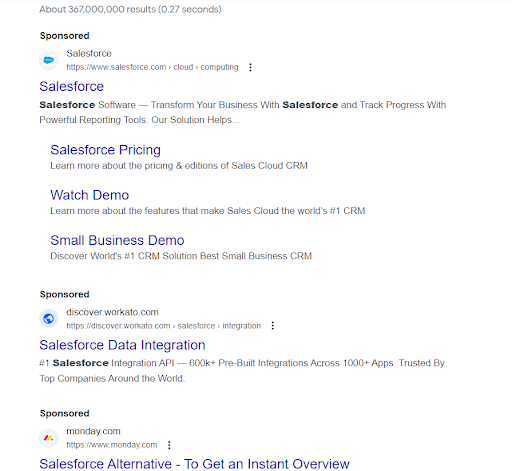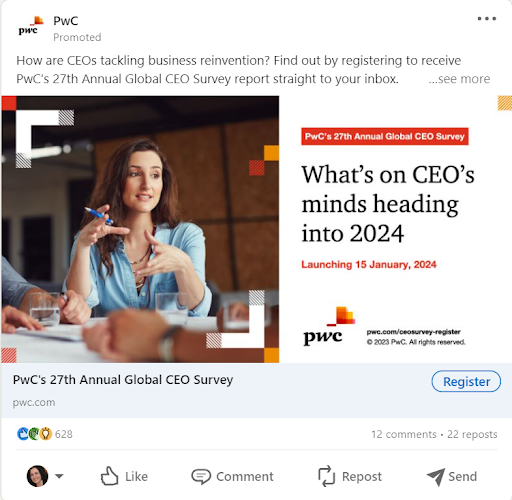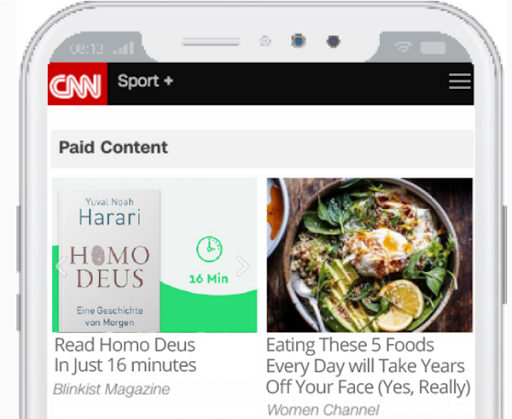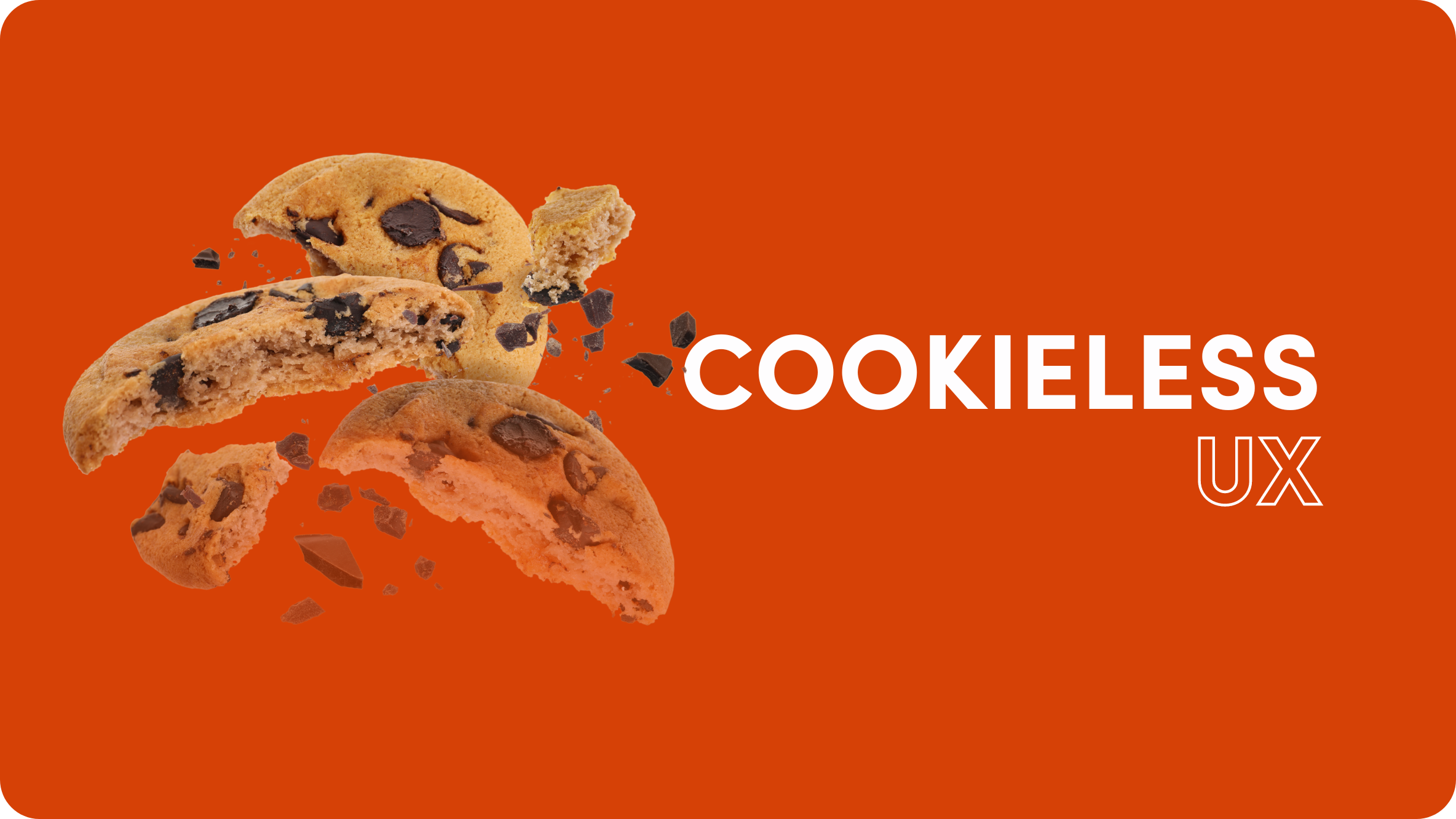Search Ads vs. Social Ads vs. Native Ads: How Do They Stack Up?

If you’re starting to feel that your PPC advertising strategy is lacking, then you might be ready to add a new channel to the mix.
Then the questions roll in. What channels should you try? Which platform works best for your audience? What type of ad will bring more qualified leads? And how can you get the best ROI from your advertising spend?
At Outbrain, we process 1 billion engagement signals every minute. So we’ve got access to loads of data to help you understand how people interact with online content, and how native ads compare to search and social in terms of performance.
Let’s start with a brief tour of these three PPC ad types, and the different ways that your audience relates to them.
Search Ads
Paid search ads are text-based ads that appear at the top of search listings on search engine results pages (SERPs). They look like regular search results, but they have the word “Sponsored” that identifies them as paid. Take a look below at the search results for “Salesforce”. The top three listings are sponsored ads by Salesforce and its competitors.

Search engine marketing (SEM) is an enormous industry with incredible potential; every year, there are 1.2 trillion searches on Google alone, not counting other search engines like Yahoo or Bing.
Why are search ads so effective? Because they are delivered at the moment when the consumer is actively searching for a product, service, or information. The viewer is already hyper-focused on the topic of the search. If the search ad is informative, enticing, or appealing in some way, then it has a good chance of being noticed and possibly clicked. Even if the user does not click, the ad is likely seen and the brand becomes associated with the motivation behind the search.
Search ads: the bottom line
Search ads are great for targeting customers when they are already looking for you (ie. they searched your company name or product), or if they are searching for a specific product, service, or piece of information that you can provide. For this reason, search ads tend to bring higher-quality leads that are more likely to convert.
Social Ads
Social media ads on Facebook, LinkedIn, TikTok, and X appear as promoted or sponsored content in the user’s news feed or on the sidebar.
Social ads have the same look and feel as organic posts, so they don’t disrupt the feed scroll.

Paid social ads are served via algorithms that define what the user might be interested in, based on past activity in their social accounts, such as likes, shares, and comments. Unlike search, which is a focused, goal-oriented activity, browsing on social media is more relaxed. Nevertheless, the social platform has access to masses of first-party data about every user, which can be leveraged to accurately target specific audiences with relevant ads. Click-through rates of social media ads hovered around 1.2% to 1.3% during the past year.
Social ads: the bottom line
Social ads are best for targeting audience segments who may be interested in your product or service, based on a range of criteria – location, age group, gender, hobbies, job title, and interests. Social networks offer advanced targeting capabilities and tools, which means you can fine-tune your criteria to reach a very specific, high-quality audience.
Native Ads
While social media ads are served only while the user is inside the social network or app (closed ecosystems), native ads are shown to people when they are browsing on the open web. Native ads appear on a wide range of publisher sites, such as news, entertainment, sports websites, blogs, and others.
Native advertising networks like Outbrain partner with popular websites to offer their ad space to advertisers and brands. People who visit their favorite websites will encounter native ads naturally as they surf the web. While spending time online, people are often very open to discovering new content, ideas, and products. Native ads help match relevant ads to audiences who may be interested. When they click on the native ad, they are taken to a landing page or product page where they can go deeper into the discovery process and become more familiar and engaged with the brand or offer.
Native networks are continually improving their targeting capabilities to help advertisers reach their best audiences online. With cookie depreciation in progress, Outbrain offers contextual targeting that does not rely on third-party data to identify and target qualified audiences. This provides an opportunity for marketers to build new strategies for ad targeting on the open web that overcome the challenges of cookieless advertising.
Native ads: the bottom line
Research by Outbrain has shown that consumers tend to trust ads that they see in an editorial environment more than they trust ads on social media. Also, there is a strong disparity between the content a person likes and shares on social media, and the content they really read. Performance marketers must find a way to appeal to the authentic interests of their audience, and soon – without cookies. Contextual targeting is a powerful alternative, and attention metrics offer a new and upcoming tool to track true engagement.
Now, to the All-Important Numbers
Performance marketing is all about the numbers, and when it comes to search vs. social vs. native ads, what they have to say is compelling.
Case study: Blinkist
Blinkist, the book summarizing app, ran a native campaign with Outbrain to boost app downloads and subscription rates. Leveraging content from the brand’s online magazine, Outbrain targeted high-potential audiences with native ads served on popular websites on the open web.
With ongoing campaign tracking and optimization, Outbrain generated up to 50,000 downloads of the Blinkist app per month.
After click-through from the Outbrain ad to Blinkist’s magazine content, users spent 50% more time on the Blinkist site compared to those who clicked through from search ads.
Results also indicated 11% higher Lifetime Value (LTV) for users who clicked on Outbrain ads compared to those who clicked on social ads.

Native Ads – The Secret Ingredient
Why are native ads more engaging than search or social?
Let’s return to the intent of the reader when they are viewing different ads. For search ads, the viewer is highly focused on the search. They’re looking for a specific product. They have a particular need to fulfill or a problem to solve.
With social ads, the reader is casually browsing, checking out what’s going on in their network. They’re not necessarily looking for anything specific, or they may not know if they are looking for anything at all. What’s more, social ads served to the viewer are based on their past likes and shares, which may not necessarily reflect their true interests in the moment. Social media ads are only viewed by the consumer while they are in the social app, so exposure is limited.
Native ads, on the other hand, are served on the open internet when the opportunity for engagement is at its peak. The viewer is in ‘discovery mode’ – they are primed to interact with brands that catch their eye and products that match their interests. That is why native ads are associated with an 18% increase in brand uplift, and is one of the strategies that marketers use to combat banner blindness in digital advertising.
For performance marketers, the message is clear – don’t just stick to the standard search and social (and display) ad strategy. Add native advertising to your portfolio, and capture the attention of qualified audiences while they discover content they love on the open web.












